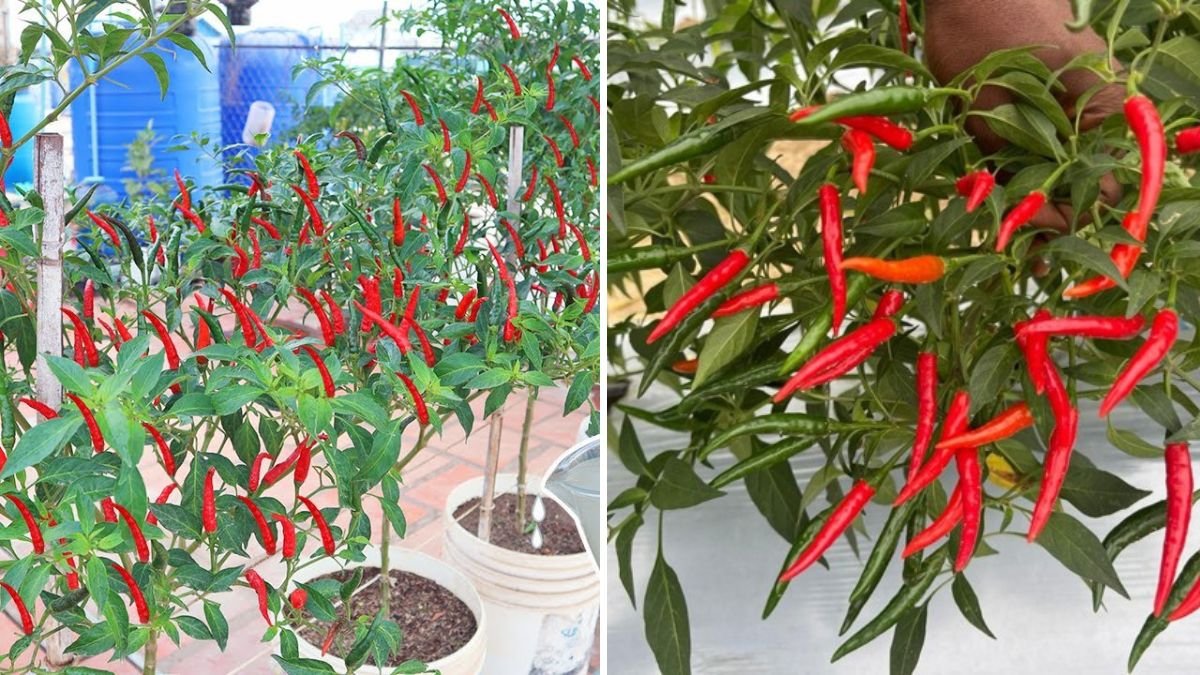Chili peppers are one of the most popular and versatile plants to grow at home. From adding a spicy kick to your dishes to providing impressive health benefits, homegrown chili peppers are both practical and rewarding. Even if you lack a garden, you can grow chili peppers successfully in containers—perfect for balconies, terraces, or small urban spaces. In this guide, we’ll walk you through the complete process of growing chili peppers in containers, from seed to harvest, including tips for maximizing yield, maintaining plant health, and enjoying a bountiful crop.
Why Grow Chili Peppers at Home?
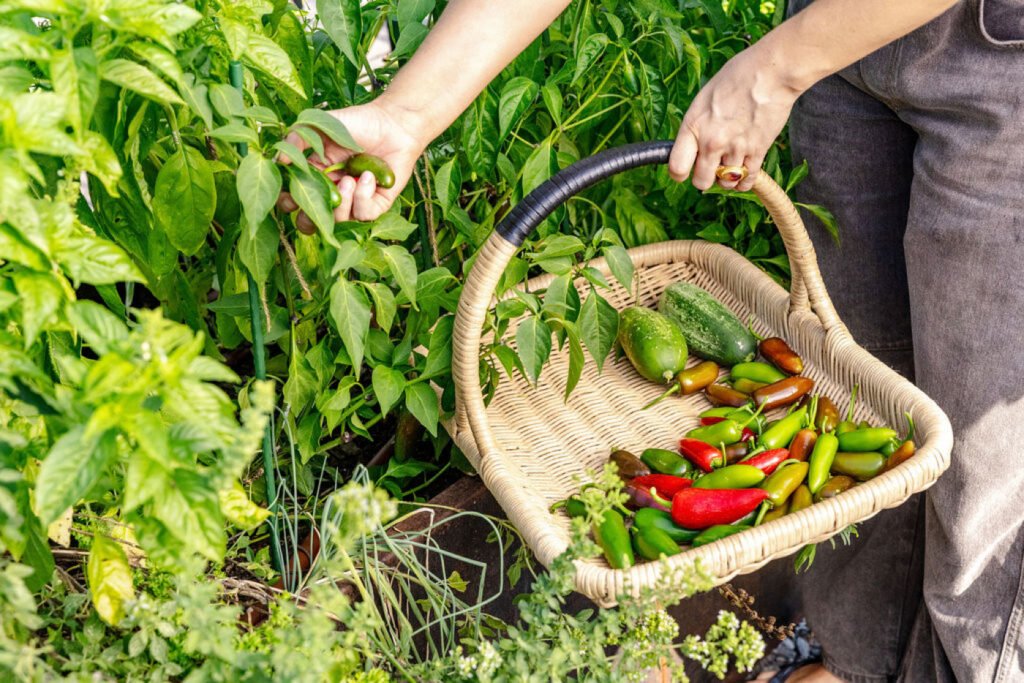
Growing chili peppers at home comes with several benefits:
- Freshness: Freshly harvested chilies are more flavorful and aromatic than store-bought ones.
- Health Benefits: Chili peppers are rich in vitamin C, antioxidants, and capsaicin, which supports metabolism and heart health.
- Cost-Effective: Growing your own peppers saves money and provides a steady supply for your kitchen.
- Urban Gardening Friendly: Container gardening allows you to grow chili peppers in small spaces.
- Variety Selection: Homegrown plants let you choose from sweet, hot, or exotic varieties that may not be readily available in stores.
With proper care and attention, container-grown chili peppers can produce a healthy, continuous harvest throughout the season.
Choosing the Right Chili Pepper Variety
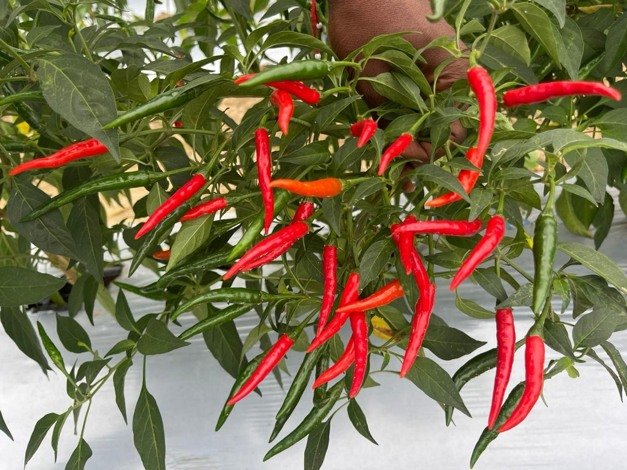
The first step in container chili gardening is selecting the right variety. Some varieties are more suitable for containers due to their compact growth and high yield.
- Jalapeño: Medium-sized, moderately hot, and ideal for sauces and pickling.
- Cayenne: Long, slender, and spicy, perfect for drying or cooking.
- Bird’s Eye Chili: Small but extremely hot, suitable for adding heat to dishes.
- Bell Peppers (Non-Spicy): Sweet and large, ideal for stuffing or salads.
For container gardening, compact or dwarf varieties are generally easier to manage and produce more peppers in limited space.
Materials Needed
Before starting, gather the following essentials for container chili gardening:
- Seeds: Choose high-quality, disease-free seeds from trusted sources.
- Containers: Pots or planters with drainage holes. Size depends on variety, but at least 10–12 inches deep is recommended.
- Potting Mix: Well-draining soil mixed with compost or organic matter. Avoid heavy clay soil.
- Watering Can or Spray Bottle: For gentle watering.
- Fertilizer: Organic or balanced fertilizers to support growth and fruiting.
Having these materials ready ensures a smooth start and higher success rates.
Starting Chili Seeds
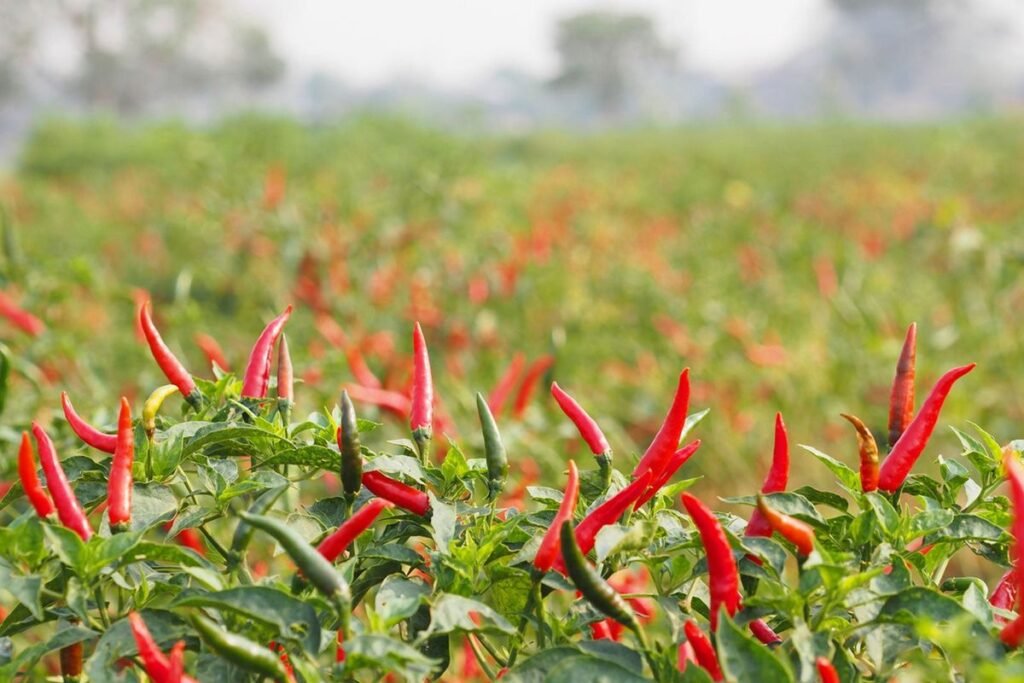
The seed stage is critical for healthy plant development. Follow these steps for successful germination:
- Seed Preparation:
- Soak seeds in water for 12–24 hours to soften the seed coat and encourage germination.
- Sowing Seeds:
- Fill seed trays or small pots with potting mix.
- Plant seeds about ¼ inch deep and cover lightly with soil.
- Watering:
- Keep the soil moist but not waterlogged. Mist gently to avoid displacing seeds.
- Temperature and Light:
- Chili seeds germinate best at 70–85°F (21–29°C).
- Provide 12–16 hours of light daily using natural sunlight or grow lights.
Seeds typically germinate within 7–14 days, depending on the variety and growing conditions.
Transplanting Seedlings
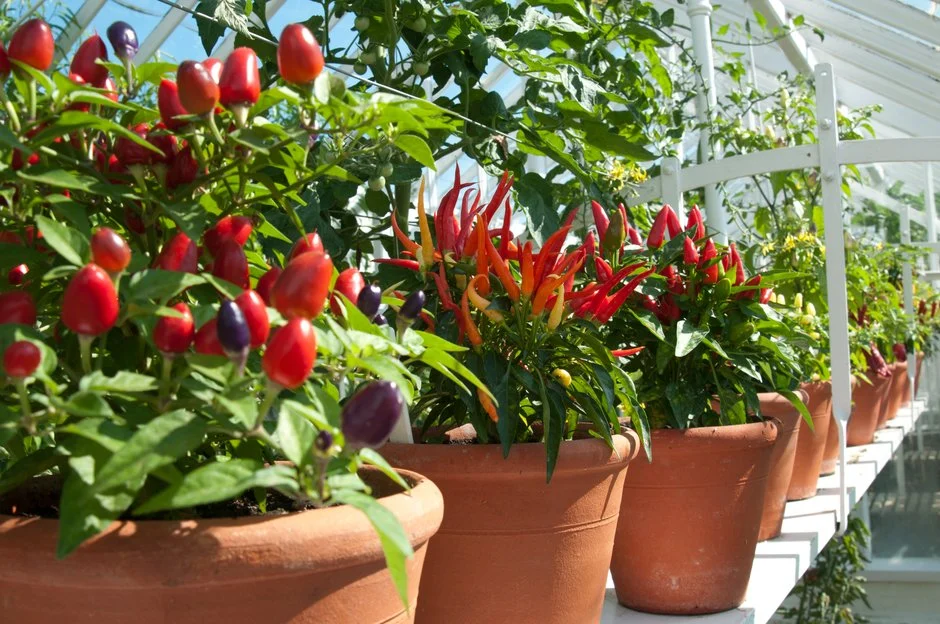
Once seedlings develop 2–3 sets of true leaves, they are ready for transplantation into larger containers:
- Choosing Containers:
- Select pots at least 12 inches deep for medium-sized peppers. Larger varieties may need 16–18 inch pots.
- Preparing Soil:
- Use a nutrient-rich, well-draining potting mix.
- Mix in compost to provide long-lasting nutrients.
- Transplanting Technique:
- Gently remove seedlings from the seed tray, keeping roots intact.
- Plant seedlings at the same depth they were growing in the tray.
- Space multiple seedlings at least 12 inches apart in larger planters.
Proper transplanting reduces transplant shock and ensures strong, healthy plants.
Caring for Container-Grown Chili Peppers
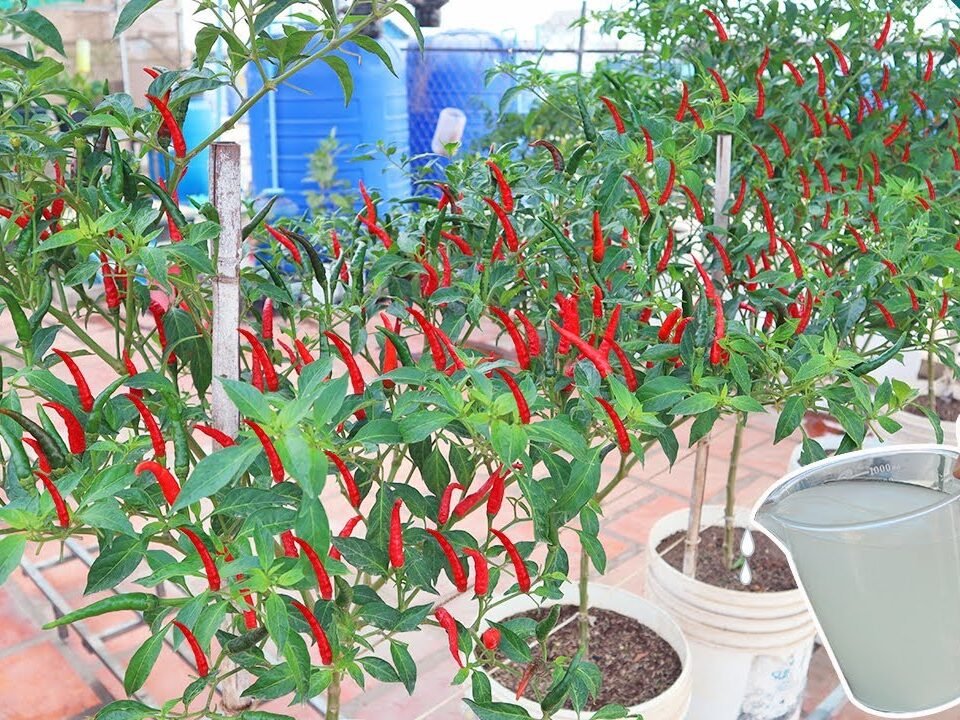
Maintaining healthy chili plants in containers requires consistent care:
- Watering:
- Keep soil consistently moist, especially during flowering and fruiting.
- Avoid waterlogging, which can cause root rot.
- Fertilization:
- Apply a balanced fertilizer every 2–3 weeks or use slow-release fertilizer at planting.
- High potassium and phosphorus levels encourage flowering and fruiting.
- Sunlight:
- Chili peppers need at least 6–8 hours of sunlight daily.
- For indoor or shaded terraces, supplement with grow lights if needed.
- Pruning:
- Remove yellowing leaves and pinch off early flowers to promote strong vegetative growth in young plants.
- Prune excess branches to improve airflow and reduce disease risk.
- Pest and Disease Management:
- Common pests include aphids, spider mites, and whiteflies.
- Use neem oil, insecticidal soap, or natural predators to control infestations.
- Ensure good air circulation to prevent fungal diseases.
Consistent care maximizes growth, flowering, and fruiting, leading to a healthy harvest.
Flowering and Fruit Development
Chili peppers produce flowers before fruit. Proper care during this stage ensures a bountiful crop:
- Pollination: Hand-pollinate flowers indoors using a small brush if natural pollinators are limited.
- Fruit Set: Flowers develop into small peppers, gradually enlarging over 3–6 weeks.
- Thinning: If multiple fruits form on the same branch, thin them to allow remaining peppers to grow larger.
Observing flower development and ensuring proper care during this stage is critical for maximizing yield.
Harvesting Chili Peppers
Chilies are typically ready for harvest when they reach full size and the desired color, which varies by variety:
- Color Change: Most chilies change from green to red, yellow, or orange.
- Harvest Method: Use scissors or garden shears to cut peppers, leaving a small stem attached. Avoid pulling to prevent plant damage.
- Continuous Harvest: Regular harvesting encourages new flower formation and prolongs fruiting.
Timely harvesting ensures peak flavor, spiciness, and nutrient content.
Benefits of Container Chili Gardening
- Space-Efficient: Ideal for small terraces, balconies, or apartments.
- Fresh and Organic: Control over soil and inputs ensures chemical-free produce.
- Continuous Supply: Regular harvesting provides fresh chilies throughout the season.
- Decorative Value: Chili plants have lush green foliage and colorful fruits, enhancing terrace aesthetics.
- Cost-Effective: Reduces reliance on store-bought chilies and allows experimentation with exotic varieties.
Container-grown chili peppers combine practicality, sustainability, and culinary value for home gardeners.
Tips for Success
- Choose compact or dwarf varieties for container growing.
- Use deep, well-draining containers with nutrient-rich soil.
- Ensure consistent watering and fertilization.
- Provide full sunlight or adequate grow light indoors.
- Monitor for pests and diseases regularly.
- Harvest peppers when they reach full size and color for best taste.
- Rotate containers or refresh soil every season to maintain soil fertility.
Following these tips ensures a productive, healthy, and long-lasting container chili garden.
Conclusion
Growing chili peppers in containers is an accessible, rewarding, and highly productive gardening project. From sowing seeds to transplanting seedlings, maintaining healthy plants, and harvesting vibrant, flavorful peppers, container gardening allows anyone to enjoy fresh chilies at home. By selecting the right variety, providing proper care, and paying attention to flowering and fruiting, you can maximize yield and enjoy a continuous harvest season after season.
Whether you’re a beginner gardener or an experienced urban grower, container-grown chili peppers are a practical and enjoyable way to add spice, nutrition, and beauty to your home garden. Start today, and soon you’ll be enjoying the fiery flavor and freshness of chilies grown right on your terrace or balcony!
